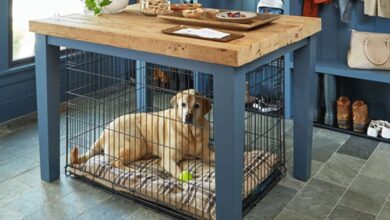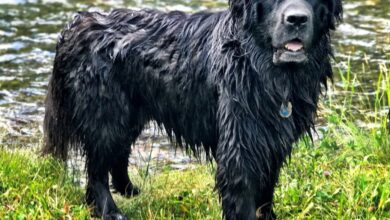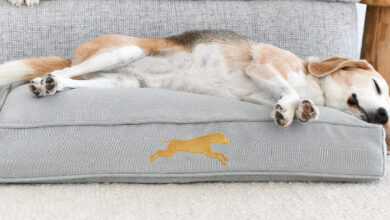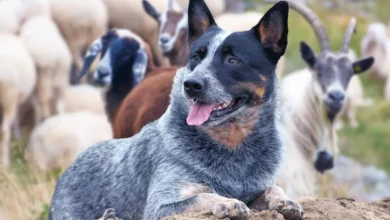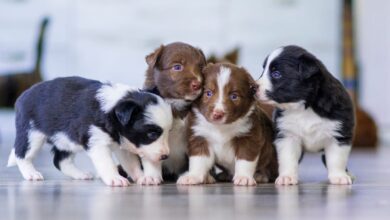An Extensive Guide: Dog Grooming in Australia
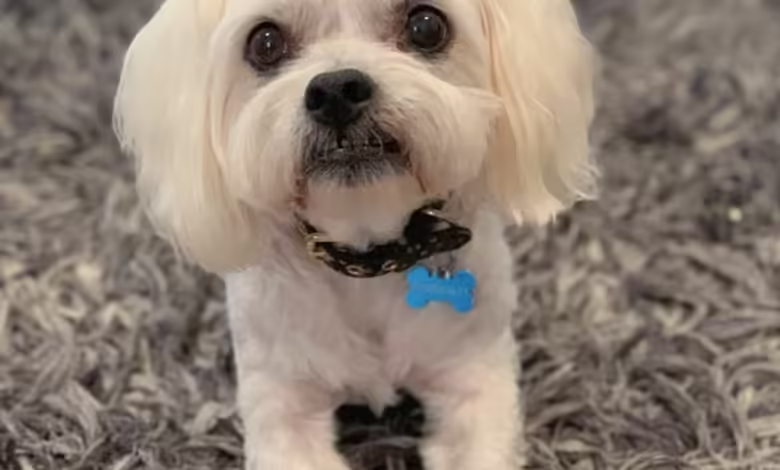
FAQ about Dog Grooming in Australia
How profitable is a dog grooming business?
The profitability of a dog grooming business really depends on several factors:
- Clientele – Having a steady stream of clients booking regularly is crucial. On average, a groomer can see 6-10 dogs per day. Building loyalty over time will increase revenue. Having 30-40 regular clients is a good baseline to aim for profitability.
- Pricing – Rates should match the quality of services provided as well as overhead costs. The averages detailed earlier provide a good guide. Raising prices by $5-10 once an established client base exists can boost profits significantly.
- Operating costs – Major ongoing expenses include rent, equipment purchases, supplies, utilities, insurance, and licenses. Many first opened a home-based business to save on rent. Clippers, dryers, and tubs represent major tool investments requiring $8,000-15,000 start-up.
- Marketing – Promoting services on websites, social media, and locally raises visibility but requires careful budgeting. Word-of-mouth also drives new clients when service quality is high.
- Labor – Most grooming businesses are solopreneurs, starting with owners doing all the work. Hiring employees as revenues increase drives more appointments daily, as well as labor costs.
If a groomer averages $50 per client and sees six clients daily, five days a week, that’s $15,000 monthly or $180,000 annually before costs. Successful shops average $60,000-100,000 in annual profit after 2-3 years when an established clientele of 50+ dogs exists, and online booking systems streamline operations. Consistency and continually improving skills are key.
How do I start a dog grooming business in Australia?
Starting a dog grooming business requires planning and regulation:
- Research regulations – Laws vary by state but require council registration, insurance, and clipping/medication certification minimum. Check with your local council.
- Choose a business structure – Sole traders are common for mobility. Consider partnerships/Pty Ltd as businesses grow.
- Obtain pricing plan and budget – Decide on equipment, facility, and startup package costs before opening.
- Get insured – Public liability insurance protects from accidental injuries on premises.
- Set up facility – Lease commercial space or operate mobile/home-based with council approval.
- Purchase equipment – Essentials are tub, dryers, clips, grooming arm, tables, and shears starting around $15K total investment.
- Market your business – Create a branded logo, website/social profiles, flyers for vets to promote opening.
- Complete training – Certificate III in Companion Animal Services usually takes 6-12 months of part-time study. On-job training is also essential.
- Test the waters – Offer introductory promotions, and discounts when booking to build initial clientele.
- Incorporate systems – Use scheduling software, and accounting methods to streamline operations as client-base grows.
Thorough preparation is key to compliance and viability. With the right skills and ongoing service excellence, profits are achievable when running a grooming operation.
How often do I need to express my dog’s anal glands?
Most dogs do not require human expression of their anal glands. These gland secretions have a distinctive odor dogs release during stool to mark territory, but occasionally glands will fail to empty fully on their own. Signs anal glands need expressing include scooting, licking the area, and foul-smelling stools. A veterinarian can manually empty impacted glands if needed. Unless signs are present, do not attempt expressing glands at home, as it risks injury if not done properly. During professional grooming, anal areas are inspected, but glands are only expressed or expressed if issues are spotted by a trained groomer. Overall, only 5-10% of dogs truly need regular human assistance emptying their glands to avoid cysts or infections developing.
Best dog grooming in Australia
Australia is home to millions of pet dogs and a thriving dog grooming industry. With so many dogs to care for, finding the best groomers is essential. This section will explore some of the top dog grooming services available around the country.
Groom Room (Sydney)
Based in Sydney, Groom Room has over ten years of experience grooming dogs of all shapes and sizes. Their highly trained groomers take pride in their meticulous work, making each dog feel calm and pampered during its grooming session. Groom Room offers a variety of grooming packages to suit all coat types and breeds. They even have special services for senior dogs or pups undergoing their first grooming experience. With excellent customer service and attention to detail, Groom Room is considered one of the premier groomers in Sydney.
Fetchdog Grooming (Melbourne)
Operating out of multiple locations around Melbourne, Fetchdog Grooming aims to make grooming a stress-free experience for both dogs and their owners. Their groomers are vetted for their gentle handling techniques as well as grooming expertise. Services include bathing, nail trims, coat desheds, and styling. Fetchdog also carries high-quality grooming products for ongoing coat care. Customers praise their ability to transform even the messiest of mutts into handsome pooches. Fetchdog’s reputation for quality has kept them busy since 2005.
Topdog Grooming (Perth)
Topdog Grooming has made a name for itself as one of Perth’s most trusted groomers. Their kind and patient staff help dogs feel relaxed during salon visits. Services include bathing, brushing, nail trims, coat balancing, anal gland expression, and more. Topdog uses high-end shampoos and conditioners to leave coats soft and shiny. They also offer add-on services like teeth brushing and ear cleaning. Feedback consistently highlights Topdog’s attention to detail as well as their prompt scheduling and polite customer service.
Best dog grooming kit Australia
Having high-quality grooming supplies makes caring for your dog’s coat at home much easier. Here are some top-rated dog grooming kits available in Australia:
- Pet Pack Grooming Kit – This affordable starter kit from Petstock includes brushes for de-matting, a slicker brush, nail clippers, ear cleaner, and shampoo. It has everything needed for basic at-home maintenance.
- Andis ProClip Two-Speed Clippers – For those who prefer to do full grooms at home, these clippers are durable and efficient. They come with guide combs, blade oil, and a storage case.
- Coveted Pets Premium Grooming Kit – A premium option, this kit has single-blade clippers, a locking comb attachment, numerous brush types, nail clippers, and an ear cleaner solution. It’s great for regular grooming.
- Buddy Wash Complete Grooming Kit – This popular kit has a tub, leash, blow dryer, de-shedding tool, and grooming necessities. It’s ideal for regular bathing as well as full grooming.
Choosing quality supplies avoids frustration and makes the grooming process pleasurable for pets. Consider your dog’s coat type and needs when selecting the right kit.
Dog grooming cost
Professional dog grooming prices vary depending on the services needed as well as regional rates. Here is a general overview of average costs in Australia:
- Bath and brush – Around $50-80 for a basic clean. Extra for long-haired/large dogs.
- Full groom – $80-120, including bath, brush out, nail trim, anal gland expression, and sometimes haircut if necessary. Extra for matted/difficult coats.
- Haircut – $30-60 depending on coat length and style. Poodles and teddy bear cuts skew higher.
- Nail trim – $15-30, usually included with other services. Quicker when done alone.
- Ear cleaning – $10-15 for basic inspection and plucking. Extra if medical issues exist.
- Teeth brushing – $5-10 often added onto services to encourage good habits.
- Anal gland expression – $10-20 for this important hygiene task. Extra if glands are impacted.
Regular grooming packages provide discounted rates, with six-session cards often available. Check individual salons for other add-on discounts as well. Keeping costs down requires detangling coats and trimming nails between visits. Quality grooming is an investment in any dog’s health, hygiene, and happiness.
How much dog should groom
As social animals, dogs thrive on human interaction and attention. Grooming provides quality bonding time while maintaining their hygiene and well-being. That said, every coat type has different needs requiring varied frequencies of care. Here are general grooming guidelines based on coat:
- Short-haired breeds – Most experts recommend grooming short coats every 4-6 weeks for basic combing, nail trims, and anal gland checks. Every eight weeks is generally acceptable.
- Medium-length coats – Medium coats like Labradors need brushing 1-2 times per week along with monthly professional grooming to prevent matting. Every 4-6 weeks, for baths/trims, maintain coats nicely.
- Long coats – High-maintenance coats on dogs like Siberian Huskies demand daily brushing to prevent tangles as well as professional grooming every four weeks. Long hair grows quickly and mats easily.
- Curly/wavy coats – Coats like poodles need combing 1-3 times per week, along with professional clippers every 4-6 weeks to maintain their curly appearance neatly.
- Senior dogs – Older pups may need more or less frequent grooming depending on their needs. Mobility issues could require more regular nail clips, for example.
Following these guidelines helps keep beloved pets comfortable while strengthening the human-canine bond. Consult groomers for any coat-specific recommendations as well.
The best dog for grooming
Dogs requiring regular, even professional-level grooming are well-suited as companion animals for those wanting to nurture this skill. Here are some top breed picks for grooming enthusiasts:
- Poodles – Often called the “groomer’s dream,” poodles come in mini, toy, and standard sizes. Their tight curls are perfect for creative styling into myriad cuts ranging from days to months of beauty.
- Schnauzers – Like poodles but lighter-coated, schnauzers are amenable for all styles, from neat trimups to lengthy furnishings. Regular brushing keeps their wiry coat tidy as they grows.
- Bichon Frise – With their powder-puff white coats and trusting natures, bichons just beg to be bathed and blown out fluffy. Brushing several times weekly is key to minimizing matting.
- Portuguese Water Dogs – Similar to poodles but with long, wavy locks, PWD coats wind beautifully into rosettes and topknots with practice. Their vigor requires patient handling.
- Spaniels – From King Charles to Springers, spaniels have silky coats that flourish with regular brushing, baths, and creative cuts for their various curl types.
- Terriers – Terriers like Westies and Cairns adapt beautifully to quick scissoring and stripping for their tidy looks when coat care is consistent.
With a commitment to regular upkeep, any of these breeds make wonderful furry students for enthusiastic canine cosmetologists. Their varying coats ensure technique diversification too.
Seven (7) steps of grooming a dog
Proper grooming is not just aesthetics – it also enables owners to fully examine their dog for any health issues. Here are the seven core steps of dog grooming:
- Brush/comb coat – Start with a thorough brushing or combing to detangle any knots before bathing.
- Bathe dog – Use a dog-safe shampoo to cleanse the coat and skin. Rinse thoroughly.
- Dry coat – Towel dry initially, then use a blow dryer on low heat setting while brushing to expedite the process.
- Inspect skin and coat – Look for cuts, inflammations, fleas/ticks, odors, or other abnormalities. Trim mats.
- Trim nails – Use clippers or a grinder to trim overly long nails so they don’t curl into the paw pads.
- Clean ears – Use cotton balls or wipes to gently clean the external ear canal, removing any debris or wax buildup.
- Brush teeth – Use canine toothpaste and a toothbrush designed for dogs to freshen breath and prevent dental issues.
Regular adherence to these fundamental grooming steps promotes optimal health, hygiene, and pet-parent bonding. Consult professionals as needed for advanced techniques.
